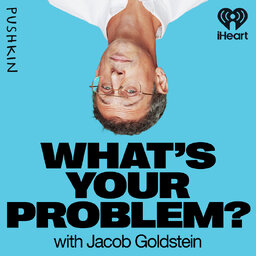Selling Billions of Crickets a Year
Mohammed Ashour is the co-founder and CEO of Aspire Food Group. The company just built the biggest cricket factory in the history of the world.
His problem: How do you sell billions of bugs a year?
If you’d like to keep up with the most recent news from this and other Pushkin podcasts be sure to subscribe to our email list.
 What's Your Problem?
What's Your Problem?


